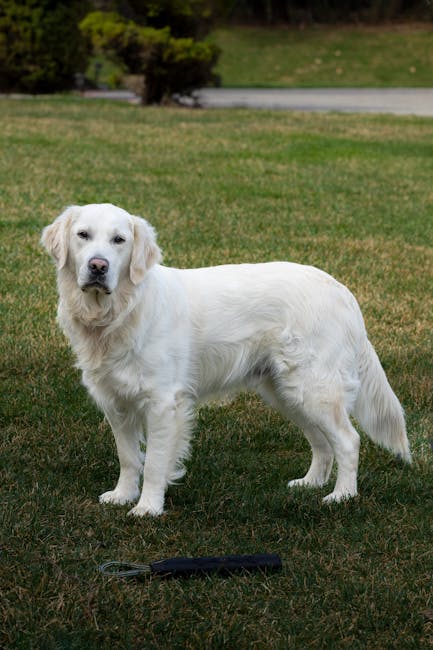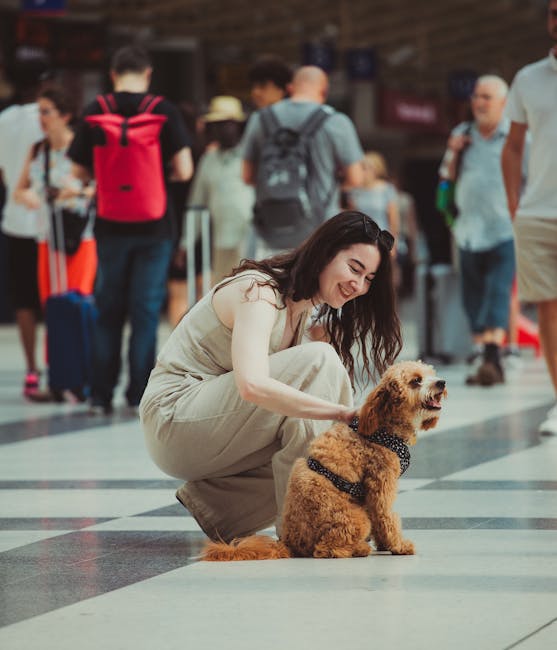Barking is natural for dogs. This is how they communicate, and different dog barks can have different meanings. Furthermore, barking has many root causes. Your dog may be excited, anxious, frustrated, or even bored. Whatever the reason, excessive barking can become problematic, cause friction with housemates or neighbors, or be disruptive at times when we need reassurance.
Successful approaches to nuisance barking will vary depending on the dog's motivation. For example, an anxious thief with separation anxiety needs to learn to be comfortable alone, while a bored thief needs mental stimulation and physical exercise. But addressing these issues can take time. In the meantime, there are many options to help keep your dog calm while you work on the underlying problem.

Positive reinforcement
What it does: Although the above devices can stop your dog from barking, they don't let him know what behavior to perform. By rewarding actions you would prefer to see, you can influence your dog's future behavior. This is known as positive reinforcement training. Ignore your dog's attention-seeking barking while giving generous love, hugs, dog treats, and dog toys for quiet sitting, and you'll soon have a much calmer dog.
Clicker training can be a method used with positive reinforcement training, using a small noise-making device known as a clicker. You use the clicker to mark the exact moment your dog performs a desired action, and each click is followed by a reward. It can be helpful to think of it as taking a snapshot of the behavior you want. This can improve communication with your dog and help him learn faster.
How to use it: Consult a professional trainer to begin positive reinforcement training. To counteract barking with positive reinforcement, you should reward your dog when he is quiet. If a bark collar or noise device stops your dog from barking, click and reward silence. As your dog catches on, wait for slightly longer periods of silence before clicking and rewarding.
You can also use positive reinforcement to train alternative behaviors, preferably those that are incompatible with barking. For example, your dog cannot bark with a ball in his mouth. So if the doorbell causes your dog to bark, teach him that the doorbell means to go get his ball so we can play fetch. You can also train calm behaviors, such as lying down on a mat, that are emotionally incompatible with the accelerated arousal of frantic barking.

Distraction toys
What they do: Toys are great for distracting your dog from barking triggers. They also provide mental stimulation and help beat boredom. Look for boredom-busting varieties of dog toys that you can fill with kibble or other foods that require your dog to work to reach the treats inside.
How to use them: yes Knowing your dog's barking triggers can help you provide distraction toys before the trigger arrives. Then your dog may be so involved in getting the food that the trigger goes unnoticed. Toys are also great for keeping your dog busy when you're not at home. Your dog is less likely to worry about your absence or bark out the window at passersby when there is something else to do. You can also use this toy as a reward in a training program or to turn a punishment timeout into an opportunity to calm down.
Ultrasonic devices
What they do: Noisy devices produce high-pitched sounds in response to barking. The sound is ultrasonic, meaning humans can't hear it, but dogs can. The tone irritates them, so it acts as a corrector, ceasing when the barking stops. Thus, your dog will learn that barking causes noise and silence makes it disappear.
These devices are available in indoor and outdoor versions. Both respond to the barking of any dog, as long as that dog is within range of the machine. This is an advantage if you have more than one dog and both bark. Outdoor machines are also great for silencing dogs in your neighbors' yards, which can prevent barking competitions between your dog and theirs. However, if you have multiple dogs and only one barks annoyingly, keep in mind that all dogs will receive correction from the device.
How to use them: Consult a professional trainer for advice on these devices and your particular dog. These devices have a specific range, so location is essential. The machine must be facing your dog and your dog must be within the detection area of the machine's microphone. Finally, keep the area between the dog and the device clear so that nothing blocks the ultrasound. Be sure to turn off the machine if you don't feel any annoying barking; Otherwise, your dog might get used to the tone.

Vibrating collars
What they do: If you want to stop your dog from barking no matter where he is, consider a bark deterrent collar. A variant is the vibrating collar. These work by listening to a bark and feeling the vibration in the dog's throat. Therefore, only the dog wearing the device will activate the vibration response. The vibration is intended to distract your dog and therefore stop barking.
How to use them: Consult a professional trainer for advice on these devices and your particular dog. Make sure you adjust the collar correctly. You should be able to insert a finger under the collar along the back of your dog's neck and the vibration unit should sit comfortably in the center of the throat. These devices have intensity settings, so be sure not to set the level as high as necessary to interrupt your dog's barking. Please note that your dog may learn to associate the collar with vibrations and should therefore only remain still when putting it on. Its on.
Spray collars
What they do: Another type of bark deterrent is the spray collar. These work by emitting a burst of air or citronella when they detect bark. The hiss of the jet, the explosion of the spray and the smell of citronella distract and bother dogs. That's why the collar interrupts and corrects barking behavior. Look for a model with accurate bark detection that only responds when the dog is wearing the collar.
How to use them: Consult a professional trainer for advice on these devices and your particular dog. Install the collar so that the sprinkler is at the correct angle. Please note that these collars can only hold a limited number of sprays at a time. You will need to refill them regularly, more often if you bark frequently. As with the vibrating collar, your dog may learn that the spray only comes out when the collar is on. However, you should not leave a bark collar on your dog 24 hours a day.

Other methods
Although there are other types of bark control methods, such as static correction, we recommend consulting a professional trainer before trying this method.
Here is a list of six techniques that can help reduce your dog or puppy's barking. While anything can be successful, you shouldn't expect miraculous results overnight and what works for your puppy may not work for another puppy. The longer your dog practices the barking behavior, the longer it will take for him to develop other means of communication or become desensitized to the things that are currently causing the barking. Understanding why your dog barks is key to choosing the techniques that work best for her specific situation.
Always keep these tips in mind while training
Yelling at your dog to shut up will not reduce barking. The goal is to determine why your dog is barking and then give him an alternative way to communicate or eliminate the stimulus that causes him to bark.
Keep your training sessions positive and upbeat. Barking is a completely normal part of your dog's communication skills.
Be consistent so you don't confuse your dog. Having everyone in your house on the same page can lead to faster results.
Prevention is key
Whether you just adopted a new adult dog or it's your first week with a new puppy, keeping your dog busy and exercising can help reduce barking and prevent him from exercising. Pay attention to what your dog or puppy barks at and use the following tips to reduce the frequency of barking. Barking is a normal dog behavior and puppies will not grow out of it, but you can take positive steps to reduce it and teach your dog alternative ways of communicating. Barking can be a very important tool in knowing what your dog is afraid of or what makes him uncomfortable. Remember, your job as a pet parent is to advocate for your dog, which means not putting him in situations that cause him too much stress. like your dog barks incessantly, is trying to tell you that he has an unmet need or needs to be removed from a scary or overwhelming situation.

Remove motivation to bark
Your dog receives some type of reward when he barks. Otherwise they wouldn't do it. Find out what they get from the barking and try to eliminate it.
What to do if your dog barks at passersby.
If he barks at people or animals passing by the living room window, control the behavior by closing the curtains or placing your dog in another room.
What to do if they bark to go outside
If your dog barks when he needs to go out, train him to ring the doorbell. You can start by taking them to the bell and giving them a treat when they ring it. Have him slowly ring the doorbell before leaving to go to the bathroom.
Ignore the barking
If you think your dog is just barking to get your attention, try ignoring him. Regular exercise and the use of puzzle toys can keep your dog occupied during a work call or when he watches television. For starters, stopping your dog from barking (by tiring him out or giving him something to do) is easier than trying to get him to stop barking.
When your dog barks when he is locked up
If you use a crate or a closed room when you leave the house or when visitors come over, make sure you don't let them out of the room or crate when they bark. Again, using puzzle toys and plenty of exercise before confinement can really curb his barking. If he barks, wait until he stops (even just for a second) to open the crate or gate or reward him with a treat or new puzzle.
If they find that being quiet gets them a reward, increase the amount of time they have to stay quiet before receiving a reward.
Keep it fun by varying the amount of time. Sometimes reward him after five seconds, after twelve seconds, after three seconds, after twenty seconds, and so on.
Desensitize your dog to stimuli
If your dog barks due to specific triggers, gradually get him used to the cause of the barking. Start with stimulation (what makes them bark) from a distance. It should be far enough away that he won't bark when he sees you. Give him plenty of treats so he can maintain eye contact with you and not bark. Place the stimulus a little closer (maybe just a few inches or a few feet to start) and feed treats. If your dog starts barking, you have gotten too close to the stimulus.
Don't be stingy with treats. For example, if you need to pass another dog during your walk, hold a high-value treat in your hand and feed it continuously as you quickly pass by the other dog, then stop as soon as there is enough distance between you and the dog. dog. Another dog.
When your dog barks at other dogs
Have If a friend has a dog, stay out of sight or far enough away so your dog doesn't bark at the other dog. When your friend and his dog come into view, he starts giving her treats. Stop giving treats as soon as your friend and his dog are out of sight. Repeat the process several times. Remember not to progress too quickly, as it may take days or weeks before your dog can pay attention to you and the treats without barking at the other dog. If you are having difficulty getting your dog to bark in front of strangers or other dogs, seek the help of a positive reinforcement-based dog trainer.
Ask your dog about incompatible behaviors
When your dog starts barking, ask him to do something that is incompatible with barking. Teach your dog to respond to barking stimuli with something that discourages barking, such as lying down on the bed.
When your dog barks at visitors at the door
Throw a treat on their bed and ask them to 'come to your bed.’ When they go to bed to win a treat, you can up the ante by opening the door while they're in bed. If they get up, close the door immediately. Repeat this until they stay in bed as the door opens. Then, increase the difficulty by having someone ring the doorbell while your dog is in bed. Reward them if they stay in place. You may need to keep your dog on a leash so you can accompany him to his bed when visitors arrive.
Keep your dog tired
Make sure your dog gets enough physical and mental exercise every day. A tired dog is a dog that is less likely to bark out of boredom or frustration. Depending on his age and health, your dog may need several long walks, as well as a good game of ball chasing and playing with interactive toys.
How to Deal with Barking
it is a natural way of communicating. However, excessive barking can become problematic, create tensions with neighbors and disturb the peace. Understanding the reasons behind barking is crucial, whether it is fear, boredom or excitement. Although addressing the cause takes time, several tools can help control nuisance barking while working on long-term solutions.
Positive reinforcement
Encouraging desired behavior through rewards is the cornerstone of training. Positive reinforcement, such as rewarding silence with treats or toys, can positively influence your dog's behavior. Clicker training, which uses a small device that makes sounds to mark desired actions, can promote communication and speed up the learning process.
Distraction toys
Toys that keep your dog mentally and physically occupied can distract his attention from barking triggers. Stuffed toys provide mental stimulation and keep your dog's attention, reducing the chance of barking.
Ultrasonic devices
These devices emit high-pitched sounds in response to barking, which are audible to dogs but not to humans. Acting as a correction, They teach your dog that barking creates an unpleasant sound that promotes silence. Indoor and outdoor options are available, with outdoor units useful for preventing barking neighboring dogs.
Vibrating collars
For consistent bark control regardless of location, vibrating collars detect barking and respond with a distracting vibration. These collars are effective at disrupting barking behavior, especially when placed correctly and set to an appropriate intensity level.
Spray collars
Another type of bark deterrent collar, the spray collar, releases air or citronella when activated by barking. The unpleasant feel and smell deter barking, making them effective correctives when used correctly.
Other techniques
Methods such as static correction exist, but they should be approached with caution and preferably under professional guidance. Recognizing that each dog is unique, implementing a combination of techniques tailored to your dog's specific needs is often the most effective approach.

Key training principles
- Understand the cause of the barking and address it.
- Keep training sessions positive and consistent.
- Eliminate rewards for barking and redirect attention.
- Use tools and techniques to prevent and control barking triggers.
- Take care of your dog's needs and avoid stressful situations.
- Offer mental and physical stimulation to reduce boredom and frustration.
By combining understanding, patience, and the right tools, you will be able to effectively control nuisance barking and promote positive communication with your canine companion.

